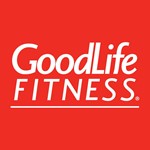You're sweating, breathless and your muscles are screaming for a break.
As you head to the showers, you think you just got in a great, intense workout.
Well, think again.
An hour in the club doing aerobics or pounding on a treadmill might feel like you're achieving maximize results, but you may not be using your time wisely.
The key is elevating your heart rate to an optimum level, which is one of the reasons high-intensity interval training (HIIT) is gaining popularity.
A 30-minute HIIT workout focuses on short, intense bursts of exercise alternating with brief recovery periods of less-strenuous movements or rest.
“Engaging in higher intensity (80 to 90 per cent) of maximum heart rate for a shorter period of time has a superior impact to a longer duration of moderate (60 to 70 per cent) to maximum heart rate,” says Kim Lavender, vice-president team training and specialty group training for GoodLife Fitness.
“In essence, you create a higher oxygen debt that takes longer to recover from, ultimately burning more calories.”
That calorie “afterburn” effect is called excess post-exercise oxygen consumption (EPOC), which means your body burns calories following your workout.
It's one of the benefits of HIIT, along with a stronger heart, more cardiovascular capacity and improved muscle function.
HIITing is for everyone
What makes HIIT even more appealing is you don't have to be at a certain fitness level to do it.
“It's all relative to your own current fitness level,” Lavender says. “When you're doing HIIT, it's relative to your heart rate, so it's whatever it takes to get into that specific heart-rate zone that's 80 to 90 percent of your max.
“Exercises can be progressed or regressed based on wherever you're at.”
How you reach that targeted heart rate isn't a guessing game.
There's no way to clearly determine just how hard someone is working unless they have some type of heart monitor on, Lavender says.
GoodLife Fitness members have access to MyZone heart monitors, which don't have the margin of error that some common wrist monitors have.
“When you're wearing a chest strap like a MyZone monitor, it is 94 per cent accurate to an EKG,” she says, referring to an electrocardiogram.
Tapping into research
GoodLife's HIIT workouts are supplemented by science, including knowledge gained from studies such as one done at the University of New Mexico.
“We're basing programming on research that has evolved over the last 10 years, and it has even changed recently,” Lavender says.
“The University of New Mexico study looked at different types of high-intensity interval training. What they're finding is it's not just interval training, it's interval resistance training.”
That could be taking a basic exercise such as a squat and adding in a medicine ball, band or suspension trainer to increase the tempo and reach the desired intensity, she says.
The smart approach
It's important to ensure foundation movements are done correctly and balanced within the HIIT workout.
“Often intensity and the push are prioritized over form and technique,” Lavender says. “I believe you can achieve intensity without sacrificing form and technique.
“It's not just about smashing a workout, it's about doing it with intelligence and doing it smartly with proper form and technique so we don't end up with injuries.”
Injuries can also be avoided with proper maintenance of your body in between workouts to help accelerate recovery.
GoodLife trainers may recommend yoga, stretching, band work or foam rolling as well as myofascial release or fascial stretch therapy, which are two techniques to relieve the tight areas around muscles and in connective tissues that can trigger pain.
Move
Post Holiday Fitness Reset
A Gentle Post-Holiday Fitness Reset to Get Back on Track
6 min read
December 24
